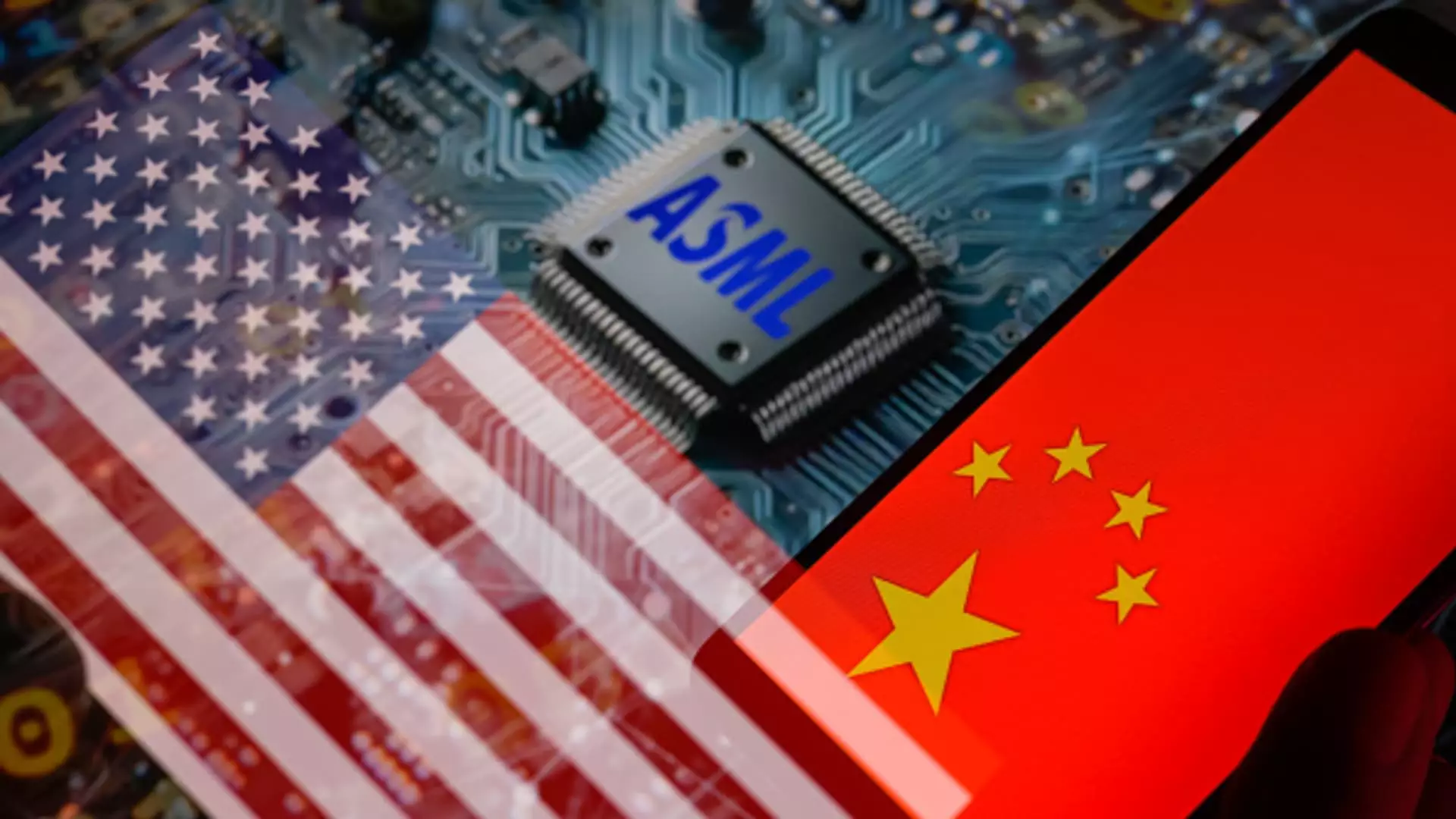The semiconductor industry recently displayed notable fluctuations as shares of major global equipment manufacturers surged following reports of a potential easing in U.S. sanctions against China’s chip sector. Companies like ASML and Tokyo Electron experienced significant stock price increases, showcasing investor optimism in the face of regulatory uncertainties. Specifically, ASML’s stocks rose approximately 3.6% in European markets, while Tokyo Electron saw more than a 6% uptick in Japan. This surge reflects the market’s mixed feelings regarding the evolving landscape of international trade and technology restrictions, particularly as the United States considers new, though less stringent, measures targeting critical segments of China’s semiconductor supply chain.
According to sources from Bloomberg, the Biden administration is contemplating more nuanced actions regarding the export of semiconductor equipment and AI memory chips to China. Notably, these proposed regulations appear to be less harsh compared to earlier drafts that were anticipated to have a greater effect on the industry. The U.S. Commerce Department has not issued an immediate statement regarding these developments, leaving the market in a state of speculation. An important aspect of these potential changes includes the possibility of limiting the number of Chinese tech companies—such as Huawei—added to the export blacklist known as the Entity List.
One particularly impactful consideration is the continued exclusion of ChangXin Memory Technologies, a prominent Chinese chip manufacturer. Analysts from Jefferies have suggested that this decision could serve as a buffer for ASML, predicting that the anticipated 30% revenue drop from China may not materialize to the extent previously feared. Such considerations underline the delicate balance policymakers must navigate in an environment rife with geopolitical tension and technological competition.
ASML stands at a pivotal juncture in the semiconductor supply chain, given its unique technological offerings that are vital for chip production. The Dutch company manufactures lithography machines crucial for designing the most sophisticated semiconductors, positioning it as a linchpin in transactions with both advanced and less advanced “fabs” worldwide. However, ongoing U.S-initiated export controls have created barriers for ASML, preventing the sale of its cutting-edge machinery to Chinese manufacturers. The recent tightening of restrictions has also made it more challenging to export older machine models, emphasizing the indirect repercussions on overall demand.
While some new rules might introduce temporary relief, any policy that adversely affects semiconductor manufacturers will inevitably detriment ASML and its peers in the foreign equipment sector. The potential for these restrictions to hinder sales to key markets can create a ripple effect, influencing not only ASML but also the broader semiconductor ecosystem, especially as it collides with national interests and competitive pressures.
The semiconductor industry’s trajectory in the context of U.S.-China relations remains fraught with both challenges and opportunities. Investors appear cautiously optimistic, reflected in the recent market performances of companies like ASML and Tokyo Electron. Yet, as decisions are made at the governmental level, the future landscape of semiconductor trade will hinge on the delicate interplay between innovation, regulatory frameworks, and geopolitical strategy. The semiconductor battle is emblematic of larger global tensions, reinforcing how critical control over technological resources has become in the 21st century. As the landscape evolves, all eyes will remain on how these policies will shape the future of semiconductor manufacturing and international collaboration.

